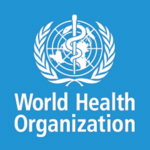Acupuncture is officially recognized by the World Health Organization (WHO)
 In the official 2002 report, Acupuncture: Review and Analysis of Reports on Controlled Clinical Trials, the WHO has listed the following symptoms, diseases and conditions that have been shown through controlled trials to be treated effectively by acupuncture:
In the official 2002 report, Acupuncture: Review and Analysis of Reports on Controlled Clinical Trials, the WHO has listed the following symptoms, diseases and conditions that have been shown through controlled trials to be treated effectively by acupuncture:
- induction of labor
- correction of malposition of fetus (breech presentation)
- morning sickness
- primary dysmenorrhea
- nausea and vomiting
- depression (including depressive neurosis and depression following stroke)
- low back pain
- neck pain
- sciatica
- tennis elbow
- knee pain
- periarthritis of the shoulder
- sprains
- facial pain (including craniomandibular disorders)
- headache
- dental pain
- tempromandibular (TMJ) dysfunction
- rheumatoid arthritis
- postoperative pain
- stroke
- essential hypertension
- primary hypotension
- renal colic
- leucopenia
- adverse reactions to radiation or chemotherapy
- allergic rhinitis, including hay fever
- biliary colic
- acute bacillary dysentery
- acute epigastralgia
- peptic ulcer
- acute and chronic gastritis
According to the WHO official report, Acupuncture: Review and Analysis of Reports on Controlled Clinical Trials, acupuncture can also be effective in the following situations:
- Diseases, symptoms and conditions for which the therapeutic effect of acupuncture has been shown, but further proof is required. These conditions are effectively treated as in the above list. More clinical trials are required to for scientific documented proof of effectiveness.
- Diseases, symptoms and conditions reporting some therapeutic effects for which acupuncture is worth trying (nine conditions).
- Diseases, symptoms and conditions in which acupuncture may be tried, provided the practitioner has special modern medical knowledge and adequate monitoring equipment (eight conditions).
Link to the WHO report: http://whqlibdoc.who.int/publications/2002/9241545437.pdf
Study of the effect of Acupuncture on assisted reproduction therapy (ART)
Furthermore according to the 2002 study Influence of acupuncture on the pregnancy rate in patients who undergo assisted reproduction therapy, Acupuncture treatments doubled the probability of pregnancy in patients undergoing embryo transfer with ART.
Objective: To evaluate the effect of acupuncture on the pregnancy rate in assisted reproduction therapy (ART) by comparing a group of patients receiving acupuncture treatment shortly before and after embryo transfer with a control group receiving no acupuncture.
Result(s): Clinical pregnancies were documented in 34 of 80 patients (42.5%) in the acupuncture group, whereas pregnancy rate was only 26.3% (21 out of 80 patients) in the control group.
Conclusion(s): Acupuncture seems to be a useful tool for improving pregnancy rate after ART.
http://www.ncbi.nlm.nih.gov/pubmed/11937123
